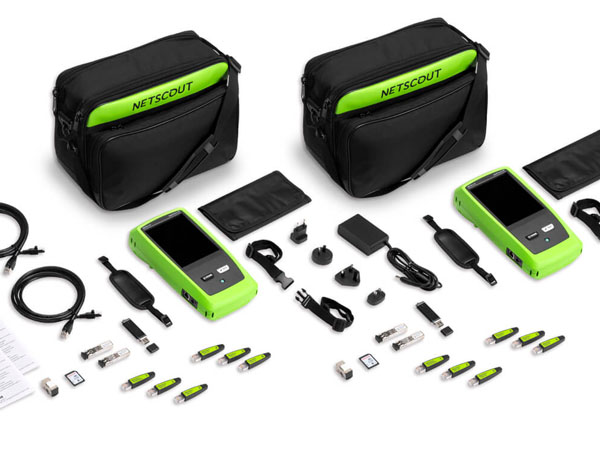帶寬與速率的區別(Bandwidth and Data Rates)
When it comes to copper cabling, you’ve probably heard of Category 6 as having a bandwidth of 250 MHz and Category 6A as having a bandwidth of 500 MHz. (The bandwidth is often printed on the cable jacket.) This creates plenty of confusion since we think of bandwidth on the network as expressed in Mb/s or Gb/s. We are not wrong in that mindset – your Category 6A cable may have an operating bandwidth of 500 MHz, while your network may have a bandwidth of 10 Gb/s.
說到銅纜,你可能聽說過6類的帶寬是250MHz,6類的帶寬是500MHz(帶寬通常打印在電纜護套上。)這造成了大量的混亂,因為我們認為網絡上的帶寬是以Mb/s或Gb/s表示的。我們的想法並沒有錯——您的6A類電纜的工作帶寬可能為500 MHz,而您的網絡的帶寬可能為10 Gb/s。
So why is category cable bandwidth defined as MHz? Good question. Megahertz is the frequency or rate at which a wave will cycle each second, with 1 hertz equal to 1 cycle per second and 1 MHz equal to 1 million cycles per second. The relationship of speed to frequency is a bit complex, but in simple terms, higher frequencies are needed to carry more bits of data. Each data bit is encoded on a carrier frequency, and the amount of data that can be transmitted per second depends on the signal encoding scheme of the active equipment.
那麼,有同學會問為什麼類別電纜帶寬定義為Mhz?這是個好問題。兆赫是波每秒循環的頻率或速率,1赫茲等於每秒1個循環,1兆赫等於每秒100萬個循環。速度與頻率的關係有點複雜,但簡單來說,需要更高的頻率來承載更多的數據位每個數據位在載波頻率上被編碼,並且每秒可以發送的數據量取決於有源設備的信號編碼方案。
Back in the days of Cat 5, the bandwidth and the data rates were the same – 100 MHz cabling could deliver 100 Mb/s. But designers of network interfaces have been able to develop encoding schemes such as pulse amplitude modulation (PAM) and DSQ128 to go beyond the simple 1:1 relationship of bandwidth to data rate. By the time Cat 6 came out, they were able to drive 10 Gbps over a cable with a bandwidth of 250 MHz. This approach is how NBASE-T is able to get 2.5 and even 5 Gbps out of Cat 5e cable and how your cable provider gets you faster internet speeds without recabling the connection to your house.
早在第5類的時代,帶寬和數據速率是一樣的——100兆赫的電纜可以傳輸100兆字節/秒。但是網絡接口的設計者已經能夠開發編碼方案,如脈衝幅度調製(PAM)和DSQ128,以超越帶寬與數據速率的簡單1:1關係,到Cat 6問世時,他們已經能夠通過一根帶寬為250mhz的電纜驅動10gbps這種方法是NBASE-T如何能夠從5e類電纜中獲得2.5甚至5 Gbps,以及您的電纜供應商如何在不重新布線的情況下,為您提供更快的網速。

同類文章排行
- 帶寬與速率的區別(Bandwidth and Data Rates)
- EXFO的OTDR測試儀區別MAX-715B/MAX-720C/MAX-730C/FTB
- 如何檢驗福祿克跳線適配器性能?
- 福祿克FLUKE DTX-PCTAC5EKS/DTX-PCTAC6KS/DTX-PCTAC6AKS/DSX-PCTAC6AKS何時需要更換?
- 福祿克FLUKE DSX2-8000/DSX2-5000跳線測試與通道測試的區別?
- 解讀您網線Fluke測試報告
- 邊緣測試
- 福祿克FLuke Ti25 T i32 TIS75 TI401PRO Ti450 Ti480PRO紅外熱像儀對比
- 關於GBT50312-2016綜合布線 GBT21671-2018局域網(LAN)係統驗收GBT32420-2015無線局域網測試規範設備選型的NetAlly和FLUKE方案
- 用於將成像儀連接到 PC 的福祿克熱成像驅動程序
最新資訊文章
您的瀏覽曆史








